#DuSable Museum
Explore tagged Tumblr posts
Text
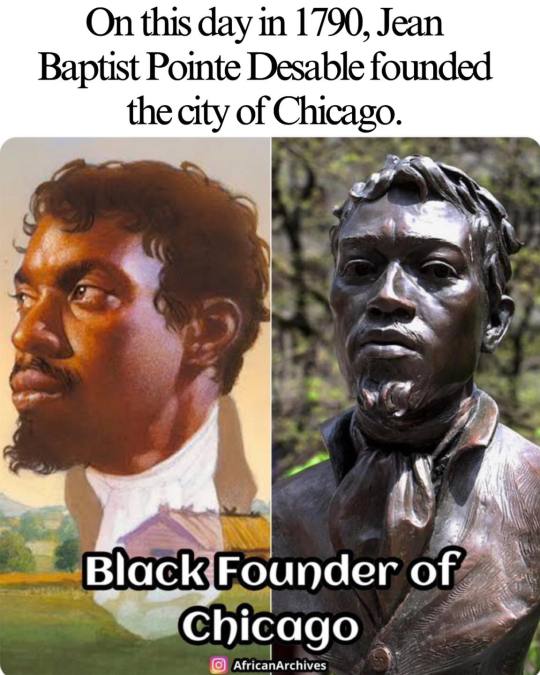
Jean-Baptiste Pointe DuSable was born in Saint-Domingue, Haiti (French colony) during the Haitian Revolution. At some point he settled in the part of North America that is now known as the city of Chicago and was described in historical documents as "a handsome negro" He married a Native American woman, Kitiwaha, and they had two children. In 1779, during the American Revolutionary War, he was arrested by the British on suspicion of being an American Patriot sympathizer. In the early 1780s he worked for the British lieutenant-governor of Michilimackinac on an estate at what is now the city of St. Clair, Michigan north of Detroit. In the late 1700's, Jean-Baptiste was the first person to establish an extensive and prosperous trading settlement in what would become the city of Chicago. Historic documents confirm that his property was right at the mouth of the Chicago River. Many people, however, believe that John Kinzie (a white trader) and his family were the first to settle in the area that is now known as Chicago, and it is true that the Kinzie family were Chicago's first "permanent" European settlers. But the truth is that the Kinzie family purchased their property from a French trader who had purchased it from Jean-Baptiste. He died in August 1818, and because he was a Black man, many people tried to white wash the story of Chicago's founding. But in 1912, after the Great Migration, a plaque commemorating Jean-Baptiste appeared in downtown Chicago on the site of his former home. Later in 1913, a white historian named Dr. Milo Milton Quaife also recognized Jean-Baptiste as the founder of Chicago. And as the years went by, more and more Black notables such as Carter G. Woodson and Langston Hughes began to include Jean-Baptiste in their writings as "the brownskin pioneer who founded the Windy City." In 2009, a bronze bust of Jean-Baptiste was designed and placed in Pioneer Square in Chicago along the Magnificent Mile. There is also a popular museum in Chicago named after him called the DuSable Museum of African American History.
x
#Jean-Baptiste Pointe DuSable#Haitian Revolution#Chicago history#founder of Chicago#black history#Native American wife#Kitiwaha#American Revolutionary War#British arrest#Michilimackinac#St. Clair Michigan#trading settlement#Chicago River#John Kinzie#European settlers#Great Migration#Carter G. Woodson#Langston Hughes#Windy City#bronze bust#Pioneer Square#Magnificent Mile#DuSable Museum#African American history
608 notes
·
View notes
Text
youtube
I was a transportation, prop, and set PA for this production
At American Family Insurance, we believe everyone deserves the opportunity to be free to dream. Inspired by the 1963 March on Washington, we invited Chicago area students and elders to the Dusable Museum of African American History to participate in an immersive experience of that historical day. Insure carefully, #DreamFearlessly @ http://www.amfam.com
#American family insurance#march on washington#dr. martin luther king#dusable museum#Youtube#PA#production assistant
0 notes
Text
"Ironheart: Bad Chemistry" Brings Back Ironheart Archenemy Khem

Riri Williams is getting a new solo one-shot adventure that brings back Khem from 2023's Free Comic Book Day: Marvel's Voices #1. Ironheart: Bad Chemistry hails from writer John Jennings and artist Jethro Morales.
"She’s already attacked Chicago once and made off with a valuable artifact from the DuSable Black History Museum. Now the alchemical transformer Khem is back for another bite of Ironheart’s city – and this time, she’s not alone. What is Khem’s connection to a classic Iron Man villain – and can Riri stop her before all of Chicago burns?" (Marvel Comics)
Ironheart: Bad Chemistry #1, sporting a main cover by Eder Messias and variant covers by Godtail and Paris Alleyne, goes on sale on April 2, 2025.
(Image via Marvel Comics - Eder Messias' Cover of Ironheart: Bad Chemistry #1)
#ironheart bad chemistry#ironheart#riri williams#john jennings#jethro morales#eder messias#khem#marvel comics#TGCLiz
7 notes
·
View notes
Text
I remember this :3
//Went to the DuSable Black History Museum a few hours ago, and it was awesome, but traumatizing.
I feel really bad for my ancestors but i got cool pictures!










Theres more pictures, I'll repost this to show you all of them
10 notes
·
View notes
Text

Margaret Burroughs (1915-2010), US artist, writer, poet, educator, and arts organizer. She co-founded the Ebony Museum of Chicago, now the DuSable Museum of African American History
59 notes
·
View notes
Text
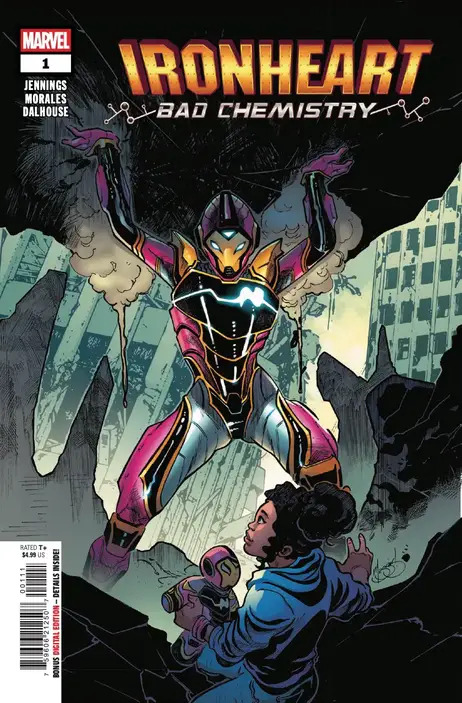
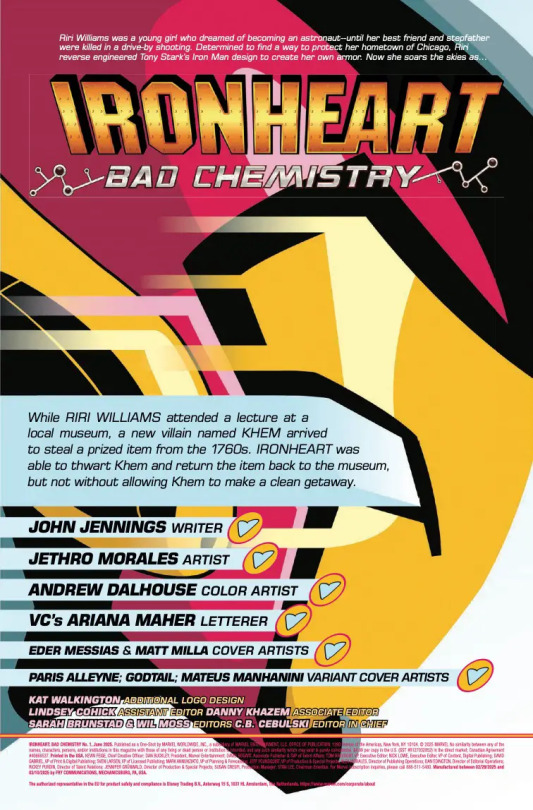
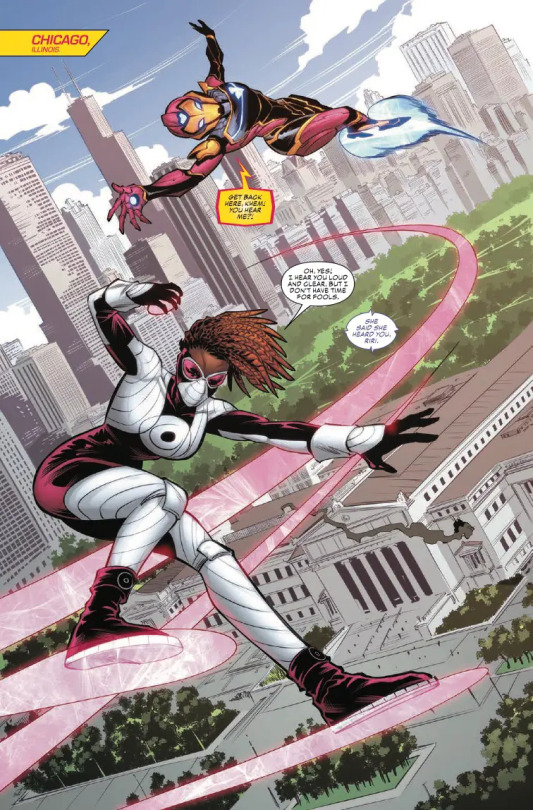



A preview of Ironheart: Bad Chemistry #1
IRONHEART: BAD CHEMISTRY #1
A NEMESIS RETURNS SENDING SHOCKWAVES THROUGH RIRI’S WORLD!
She’s already attacked Chicago once and made off with a valuable artifact from the DuSable Black History Museum. Now the alchemical transformer Khem is back for another bite of Ironheart’s city — and this time, she’s not alone. What is Khem’s connection to a classic Iron Man villain — and can Riri stop her before all of Chicago burns? It’s an action-packed flurry of blows in the Windy City!
Ironheart: Bad Chemistry #1
Written by: John Jennings Art by: Jethro Morales, Andrew Dalhouse Cover by: Eder Messias Page Count: 40 Pages Release Date: April 2, 2025
2 notes
·
View notes
Text
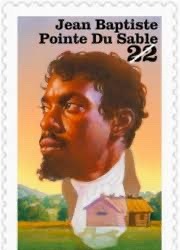
Jean-Baptiste-Point DuSable (November 4, 1745 - August 28, 1818) a frontier trader, trapper, and farmer is regarded as the first resident of what is now Chicago. He was born free in St. Marc, Saint-Dominique. His mother was an African enslaved, and his father was a French mariner. He traveled with his father to France, where he received some education. It was through this education and work that he learned languages including French, Spanish, English, and many Indian dialects.
He arrived in New Orleans, Louisiana in 1765, he learned the colony had become a Spanish possession. Having lost his identification papers and been injured on the voyage, he was almost enslaved. He migrated north, settling in an area near Peoria, Illinois. He lived in what is now Michigan and Indiana as well during the 1770s. He was arrested at what is now Michigan City by British troops who considered him a spy and was imprisoned at Fort Michilimackinac before being released to manage a tract of woodlands in Eastern Michigan. He married a Pottawatomie Indian woman, Kitihawa who was called Catherine in a traditional Pottawatomie ceremony. The couple had a daughter and a son. They married in a Catholic ceremony (1788).
They settled on the shore of Lake Michigan in a marshy area called Eschikagu. He built a home on the north bank of the Chicago River, claimed about 800 acres of land, and established a thriving trading post that included a mill, smokehouse, workshop, barn, and other smaller buildings. The post became a major supply station for other traders in the Great Lakes region. In 1796 their granddaughter became the first child born in Chicago.
He sold his trading post for $1,200 and moved to St. Charles, Missouri. He was commissioned to operate a ferry across the Missouri River. He never prospered as he did in what would become Chicago. A high school, museum, harbor, park, and bridge in Chicago have been named or renamed after him and the place where he settled at the mouth of the Chicago River is recognized as a National Historical Landmark. #africanhistory365 #africanexcellence
3 notes
·
View notes
Photo

"The Black Experience," a sixty-episode series produced by WTTW, Chicago, was broadcast over PBS stations in 1973. Charles R. Branham, then a Fellow at the Center for Urban Studies at the University of Chicago, wrote and acted as host for this series, exploring the history of blacks from their African heritage to the present. Today, Dr. Branham is a Senior Historian for the DuSable Museum of African-American History in Chicago.
13 notes
·
View notes
Text
Comfort and Convenience
For those searching for one or two bedroom apartments for rent in South Loop, SKY55 offers a space that’s perfect for both relaxation and entertainment. With WiFi™ available throughout the amenity spaces, you can easily stay connected no matter where you are in the building. The catering kitchen is ideal for hosting friends and family, making meal prep a breeze for any occasion. If you're driving, garage parking provides a secure and convenient spot for your car. For some downtime, the entertainment club room offers a great place to relax or hang out with neighbors. These features make it easy to enjoy your time at home, with everything you need right at your fingertips.
Climate and Environment in Chicago, Illinois
Chicago’s weather keeps you on your toes. Winters can be brutally cold, with icy winds and heavy snow making even a short walk feel like an Arctic expedition. But then spring arrives, and the city slowly warms up. Summers are hot and humid, perfect for hanging out by the lake or hitting one of the many festivals. Fall? That’s when Chicago really shines—cool air, changing leaves, and crisp nights. The city’s location on Lake Michigan means the weather can change fast, sometimes in a single day. When it comes to the environment, Chicago has tons of parks, riverwalks, and green spaces to escape the urban hustle. Even with its unpredictable weather, the city makes it easy to enjoy nature in every season.
Griffin Museum of Science and Industry in Chicago, IL
This place is massive. The Griffin Museum of Science and Industry isn’t just about looking at exhibits—you actually get to experience them. You can walk through a real U-505 submarine, see a massive model train set in action, or even watch baby chicks hatch. The Science Storms exhibit is wild, featuring a giant Tesla coil and a mock tornado. If you’re into space, there’s an actual Apollo 8 capsule on display. It’s the kind of museum where you can easily lose track of time because there’s so much to explore. Whether you love history, technology, or just hands-on activities, there’s something that’ll grab your attention. It’s a perfect spot for families, but honestly, adults will have just as much fun.
10 People to Watch In Chicago Business In 2025
Highlighting key figures in Chicago's business scene for 2025 really underscores the city's dynamic nature. Featuring individuals from various sectors, such as technology, healthcare, and finance, showcases the diverse talent driving the city's growth. This diversity not only fosters innovation but also strengthens Chicago's position as a major economic hub. It's encouraging to see such a broad range of professionals making significant contributions to their fields and the community. Their efforts are instrumental in shaping the future of Chicago's business landscape, and it's exciting to anticipate the developments they'll bring in the coming year.
Link to map
Griffin Museum of Science and Industry 5700 S DuSable Lake Shore Dr, Chicago, IL 60637, United States Take Columbia Dr to US-41 N/S DuSable Lake Shore Dr 1 min (0.2 mi) Follow US-41 N/S DuSable Lake Shore Dr to S Columbus Dr. Take the Columbus Dr exit from US-41 N/S DuSable Lake Shore Dr 7 min (5.7 mi) Continue on S Columbus Dr. Take E Roosevelt Rd and S Indiana Ave to S Michigan Ave 4 min (0.5 mi) SKY55 1255 S Michigan Ave, Chicago, IL 60605, United States
0 notes
Text


COME TO THIS! Trust us. This is going to be good. Robert will be going through his binders. ROBERT EARL PAIGE, SAIC CLASS OF 1962, IN CONVERSATION, April 14th, 3:30 pm, School of the Art Institute of Chicago. Building 280, Room 203. Sponsored by the Print Club. ROBERT EARL PAIGE is Chicago’s best. Artist, designer, educator, mentor to many. Robert will/may be discussing: art, design, play, beauty, elements of form, Millionaire Artisan, GESAMTKUNSTWERK, textile design, printmaking, CHICAGO, the Bauhaus, his time at SAIC when the school was inside the museum, AfriCOBRA, advice for the younger generation of artists, money, a Bentley, creativity, dressing well, African textiles, ‘Skidmore, Owings, & Merrill,’ EVERYDAY ART, music, jazz, pattern, color, interior design, the new school/old school, expressions of gratitude, Sears Roebuck & Company releasing his Dakkabar Collection, and his recent exhibitions at the Hyde Park Art Center, Salon94 Design, the Smithsonian Design Triennial at the Cooper Hewitt, the SMART Museum of Art, The Field Museum, the Chicago Cultural Center, The DuSable Museum of African American History, and others.
0 notes
Text
Actor Delroy Lindo being interviewed in Chicago by Videographer Tony Hogues at The DuSable Museum.
Delroy Lindo has been nominated at the 55th NAACP Image Award for Outstanding Actor in a Comedy Series for his role in "UnPrisoned". He is also known for his roles in films like "Da 5 Bloods" and "The Harder They Fall", Get Shorty, Malcom X, and the list goes on!
Special Thanks to our sister of the microphone Bonnie DeShong, who arranged the interview!
youtube
0 notes
Text
The Chicago Lakefront Trail Study: 30-21
Part One
Part Two
Part Three

30th: Grand
Overpass
The access point at Grand is not accessible by bike or mobility device, however both the overpass at Illinois and the underpass at Ohio are. Both are half a block away from this one, so not too many points get deducted from Grand for that. Grand also ranks above Chicago and Division, two equally inaccessible entrances, on the benefit of being an overpass with a spacious and scenic landing.

29th: Hollywood
Street-Level Pathway*
At the end of Lake Shore Drive, and one block away from the end of the Lakefront Trail, is the entryway from Hollywood Avenue. A long path that extends down the final stretch of Lake Shore Drive, the pathway isn't actually accessible from Hollywood. Instead, you have to cross at the stoplight signaling the end of Lake Shore Drive from the southeast corner to the northeast corner.

28th: 71st and South Shore (near 72nd)
Two crosswalks with crosswalk signs
At the complete opposite end of the city, this is the southern endpoint of the Lakefront Trail. There are two crosswalks, but the one at the very end is often blocked by illegally parked cars (often in much more egregious ways than pictured above.) Along with the sidewalk, there are (unprotected, but marked) bike lanes that directly connect to the trail from the south.

27th: Waldron
Two crosswalks with stop signs
Waldron Drive is the closest access point to Soldier Field, and shares space with the entrance to Burnham Harbor. It therefore shares a lot of space with streets designated for cars, but unless there is an event at Soldier Field (or potentially the Harbor or Northerly Island to the east) this stretch of Special Olympics Drive is not often used. The lack of traffic makes this crossing much safer than other street crossings listed earlier in the rankings.

26th: Diversey
Underpass
One of the more shady-looking access points for the trail, the Diversey entrance shares space with the entryway for boats to access Diversey Harbor. There are two pathways to the north and the south of the harbor entryway, and each follow a circuitous route to the Lakefront Trail as it runs parallel to Lake Shore Drive, similar to the closed access point at 59th Street.

25th: Ardmore
Street-Level Pathway*
Ardmore Avenue and the northern end of Kathy Osterman Beach mark the northern end of the Lakefront Trail, a block north of the end of Lake Shore Drive. The eastern end of Ardmore, just east of the intersection with Sheridan Avenue, limits access to car traffic. This allows for the city's bike grid to safely connect to the Lakefront Trail without bikers having to worry about competing with cars for road space.

24th: Lakeshore East
One walkway with a stop sign*
In one of the richest parts of the city lies an unmarked access point for the Lakefront Trail. There are two entrances to the Trail and the neighboring DuSable Harbor: a bike-accessible path across the street from Lakeshore East Park on the lower street level, and at the bottom of Cascade Park on the upper level. Once these entrances converge, however, you have to cross a parking lot to get to the Lakefront, which takes this ranking from being top ten or even top five to being middle of the pack.

23rd: Addison
Underpass*
The Addison access point seems like a plain underpass when you first enter it, with a ramped incline instead of stairs. However, what makes this access point rank relatively low compared to other grade-separated access points is the need to cross car traffic once you exit the underpass. One of the three crossing points at Recreation Drive, the southernmost one, doesn't have a crosswalk, but there is a sign that indicates people crossing there.

22nd: McFetridge
Two crosswalks with stop signs and crosswalk signs
Because this stretch of Special Olympics Drive is a significant part of connecting the Museum Campus, there is more car traffic at this crossing than there is at Waldron. However, this means there are even more indicators for vehicles to watch for bikers and pedestrians in the crosswalks. In addition, there is a small, almost hidden pathway to the Lakefront Trail that links from the sidewalk at Solidarity Drive, next to the Shedd Aquarium CTA bus stop. This pathway is negligible enough to not warrant its own spot on the rankings, but it does help boost McFetridge's ranking.

21st: Barry
Underpass
Many of my rankings when it comes to grade-separated access points are based solely on aesthetic preference. There are still practical issues with having half of the underpass being gravel, for example it makes it easier for puddles to form like in the picture above. However, much of my ranking here is for how strange it looks to have one half of the underpass paved like a normal city sidewalk, and the other half as an unpaved gravel walkway.
Click here for Part 5!
If you're enjoying this series about the Lakefront Trail, consider tipping me on ko-fi!
#chicago#lakefront trail#lake michigan#hiking trail#bike path#safe streets#pedestrian#chicago lakefront#lakefront
0 notes
Text

WINEDOUT LGBTQ + ALLY FOOD & WINE FESTIVAL In honor of LGBTQ+ History month we have created another experience called WINEDOUT for the LGBTQ+ and Ally community. This event showcases us and our love for food, wine and spirits. Come sample and enjoy tasting experiences from local minority or LGBTQ+Ally owned businesses.
Our venue The DuSable Museum Rotunda is great historical venue to add another layer to the experience.
Join us and our beautiful LGBTQ+ Ally people of color community while sampling and purchasing great food, wine, and our signature cocktails.
Music by DJ Ron Carroll #ebanman #lgbtqchicago #lgbtqevents #lgbtqmilwaukee
#indianaprideofcolor #blackpridestl #blackpride #chicagoblackpride
#prideindexdotcom#black gay content creators#black gay writers#black queer women#black qwoc#black lesbian#ebanman#lgbtqchicago#lgbtqmilwaukee#indianaprideofcolor#chicagoblackpride#blackpridestl
0 notes
Text




The DuSable Black History Museum and Education Center is the leading destination for Black arts, culture, research, and education in Chicago. I am so glad I took the time to travel across the city during my visit to experience this gem thronged with Black greatness.
The DuSable is the nation's oldest independent African American Museum, and holds over 15,000 pieces dedicated to Black culture and education. I have been wanting to visit this musuem for quite some time, and it was one of many stops I had to make during my visit to Chicago.
For over 60 years, the mission of the museum has been to empower people with knowledge provided in the form of visual art, lectures, live performances, and workshops. Located on the city's south side, the museum is one of many noteworthy places on Chicago's south side.
I took my time appreciating this cultural treasure. I wondered if I would have been a key contributor to civil rights and community empowerment and education like the Black Panthers. Or would I have been a pioneer of Black storytelling like John Johnson, founder of the Johnson Publishing Company? Or would I have had the courage of Kathryn Magnolia Johnson who served as an educator, activist, and secretary with the YMCA during World War I? I didn't have to wonder for long before I realized that I too, am a vessel for truth.
Racial violence is a tried and true part of the history of the world. Throughout Europe and the Americas, racial violence towards people of African descent was and still is prevalent to this day. Those who refused to be led to their death, rather choosing to lead various revolutions of sorts, were persecuted. When I read about these people, I'm inspired to make the most of the opportunities I've been given. I'm inspired to continue being the change I want to see in the world.
0 notes
Text
0 notes
Text

Margaret Taylor-Burroughs (November 1, 1915 – November 21, 2010) was a visual artist, writer, poet, educator, and arts organizer. She co-founded the Ebony Museum of Chicago, now the DuSable Museum of African American History. An active member of the African American community, she helped to establish the South Side Community Art Center, whose opening on May 1, 1941, was dedicated by FLOTUS Eleanor Roosevelt. There at the age of 23, she served as the youngest member of its board of directors. A long-time educator, she spent most of her career at DuSable High School. She was a prolific writer, with her efforts directed toward the exploration of the African American experience and to children, especially to their appreciation of their cultural identity and to their introduction and growing awareness of art. She is credited with the founding of Chicago’s Lake Meadows Art Fair in the early 1950s.
She earned a BA and MA in Art Education from the School of the Art Institute of Chicago.
She taught at DuSable High School on Chicago’s Southside (1946-69) and (1969-79) was a professor of humanities at Kennedy-King College, a community college in Chicago. She taught African American Art and Culture at Elmhurst College in 1968. She was named Chicago Park District Commissioner by Harold Washington in 1985, a position she held until 2010. #africanhistory365 #africanexcellence #alphakappaalpha
2 notes
·
View notes